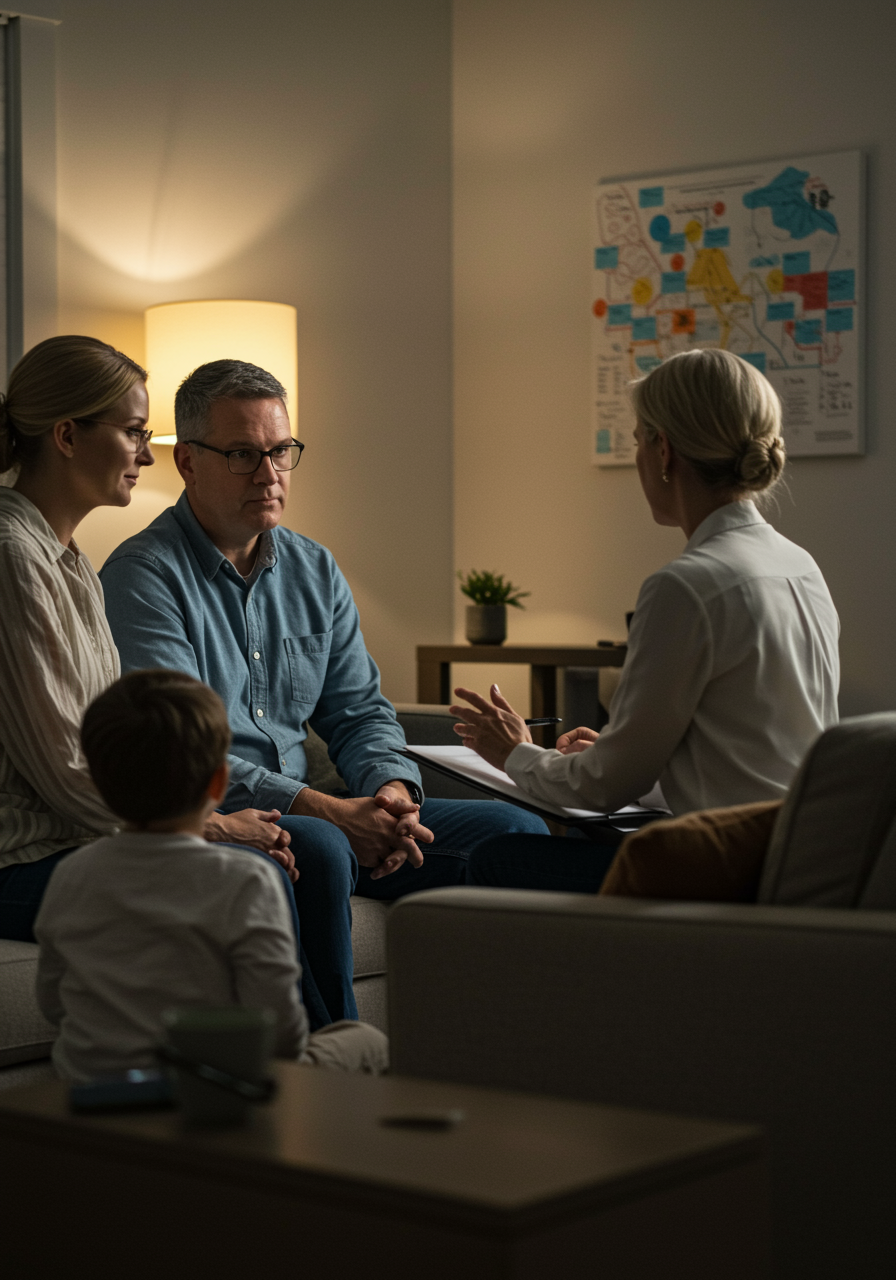Child-adapted psychotherapy is designed to address the emotional and psychological difficulties that young children may experience in a comprehensible and age-appropriate manner. The therapeutic approach is tailored to the individual characteristics and needs of each child, using tools and techniques that facilitate their expression and understanding.
Through a safe and trusting environment, children can explore their emotions, thoughts, and behaviors. We use methods such as therapeutic play, creative activities, storytelling, and other interventions based on child development, allowing them to process their experiences in a playful and meaningful way. These tools foster communication, as many children have difficulties expressing verbally what they feel or think.
Child psychotherapy focuses on resolving issues such as anxiety, fears, school difficulties, behavioral problems, low self-esteem, parental separation, among others. It can also be useful to help children adapt to stressful situations, such as family changes or significant losses.
The main objective is to provide a space where the child feels understood and supported, promoting their emotional well-being, improving their ability to cope with adversities, and fostering their emotional and social development.

Areas of Intervention
Child psychotherapy encompasses various areas of intervention to support the emotional and psychological development of the child. Some of the main ones are:
-
Anxiety and Fears: Work is done on managing anxiety and fears, helping the child to face situations that cause them discomfort.
-
Behavioral Disorders: Intervention in behaviors such as aggressiveness, impulsivity, or disobedience, teaching self-control skills and improving family relationships.
-
Emotional Difficulties (Depression, Low Self-esteem): Support in managing emotions such as sadness and developing positive self-esteem.
-
School Problems: Addressing academic, social, or school adaptation difficulties.
-
Trauma and Grief: Assistance in the healing process from traumatic experiences or significant losses.
Each intervention is tailored to the child’s needs, using playful and creative techniques that facilitate the expression and understanding of their emotions.
Phobias in Children
Phobias are intense and irrational fears of specific objects, situations, or activities. They can be limiting and cause great distress in children, interfering with their daily lives.
How it affects children:
Phobias can manifest as extreme fear and avoidance of situations that children perceive as threatening, such as going to the doctor, being in closed spaces, or being near certain animals. These fears are usually related to previous experiences but can also arise without an apparent reason.
-
It is estimated that around 10% of children experience some form of phobia at some point in their lives.
-
Phobias can affect socialization, academic performance, and the child’s confidence.
-
Early intervention through therapies such as systematic desensitization and gradual exposure can be very effective in treating phobias, helping the child overcome their fear and regain their well-being.
Anxiety
Anxiety in children is an excessive emotional response to situations that do not pose a real threat, or a persistent worry that interferes with their daily life. Often, children with anxiety experience physical symptoms such as stomachaches, difficulty sleeping, or tension.
How it affects children:
Anxiety can make children excessively worry about the future, fear new situations, or fear that something bad will happen. They may show symptoms such as irritability, nighttime fears, avoidance of activities, or difficulties concentrating in school.
-
Approximately 20% of children and adolescents experience anxiety disorders at some point in their lives.
-
Untreated anxiety can affect the child’s ability to socialize, academic performance, and emotional development.
-
Cognitive-behavioral therapies (CBT) are highly effective in teaching children to identify and manage their anxious thoughts, improving their well-being.

Developmental and Behavioral Disorders
Developmental and behavioral disorders encompass a range of conditions that affect the way children learn, communicate, interact socially, or behave. Among the most common are ADHD (Attention Deficit Hyperactivity Disorder), ASD (Autism Spectrum Disorder), and SLI (Specific Language Impairment).
How it affects children:
-
ADHD: Children with ADHD may have difficulty maintaining attention, following instructions, or controlling their impulsivity, which affects both school and their social life.
-
ASD: Children with ASD may present challenges in communication, social interaction, and may display repetitive patterns of behavior or limited interests.
-
SLI: Children with SLI have difficulties in language development, which affects their ability to understand and express themselves, even if there are no other cognitive problems present.
Treatment:
Treatment for these disorders usually includes a combination of behavioral therapy, specialized educational interventions, and, in some cases, medication. Early diagnosis and a personalized intervention plan are fundamental to maximize the child’s development and well-being.
